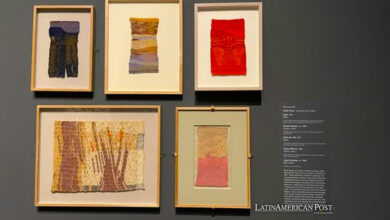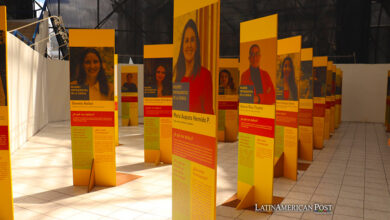The Surma Tribe and Its Unique Artistic and Cultural Expression
The members of this tribe, who call themselves Dama or Dhuak, are located primarily in southern Sudan, in the Boma plain, near the Ethiopian border, and in Ethiopia, the Kafa region.

The Woman Post | María Claudia Londoño D
Listen to this article
The Surma tribe, also known as Suri, is related to the Nubian ethnic groups and the famous Massai of Kenya and Tanzania. A striking and unique custom is how they adorn their entire body with figures painted with white chalk dissolved in water, sometimes mixed with ocher or other dyes obtained from the earth. They distribute it, including their face, with the tips of their fingers. Ancestrally, this practice, which dates back 400 years, was intended to intimidate enemy groups, and today it is a cultural sample that has transcended generations.
Additionally, they add to these ornaments dots or lines, some leaves or flowers, giving a genuinely artistic appearance without equal. This body painting practice is considered sacred to the Surma tribe and has a deep spiritual meaning. The decoration includes small abrasions made on the skin, which are then covered with these dyes.
Another distinctive feature of the Surma is the custom for women who, from the age of 20, place clay plates on their earlobes. The one set on her lower lip changes to a larger one so that when the time of marriage arrives, the dowry is more substantial due to the larger size of the saucer that the bride carries.
The men, meanwhile, demonstrate their masculinity and ability to marry in the game called Donga, which is a kind of fight using long sticks, decorating their bodies for these competitions with serpentine figures.
Also read: LISA DE ANDRÁFUEDA, POET, FOLKLORIST AND MOTHER OF JAIRO VARELA OF THE NICHE GROUP
Beautiful photographs of Surma children, youth, women, and men with unique paintings on their bodies merging with nature can be seen on the page of the photographer Giovanna Aryafara: www.giovannaphotography.com
In other latitudes, body painting acquires different meanings. In India, henna is used in an art form called mehndi, especially in marriage ceremonies, to stimulate fertility. Henna is also used in Islamic and Hindu rituals.
In Australia, the aborigines use clay or ochre, and their meaning is to indicate the social position of each one who uses it. In the south of the Brazilian Amazon, the Kayapo and Xingu tribes draw figures of insects and butterflies on their bodies to connect with the spirits of nature.
In Ecuador and Peru, in the Shuar and Achuar communities, the complexity of the paintings and the forms must be different between men and women to indicate their social position, marital status, or in red tints invoking the goddess of fertility.
In Western societies, in the 20th century, body painting appears as an expression of the plastic arts with merely decorative motifs, without particular connections or meanings. It is customary to see troupes using various graphic motifs and decorations that are part of the joyous festivities on some traditional dates at multiple festivals and parties.




